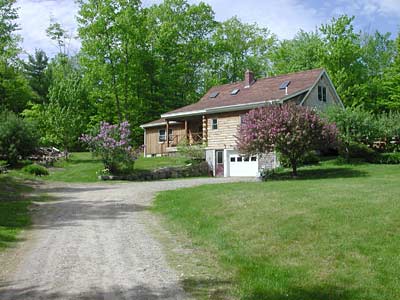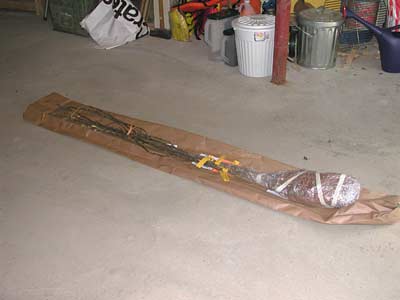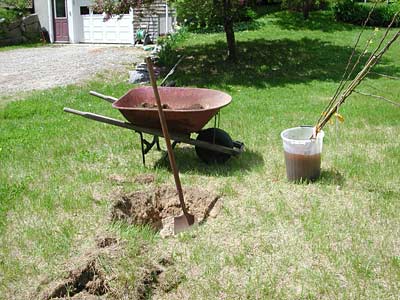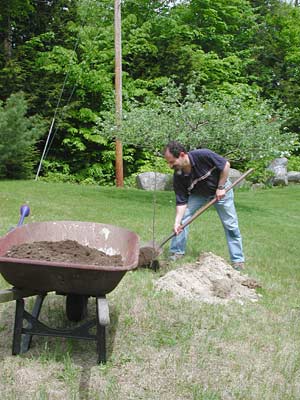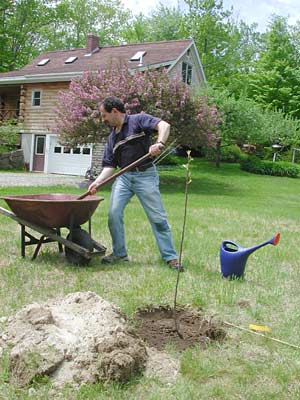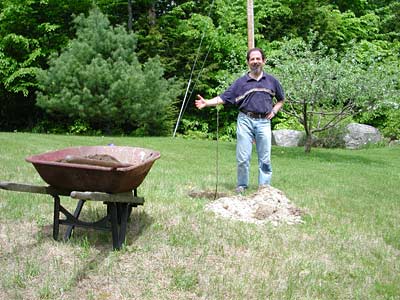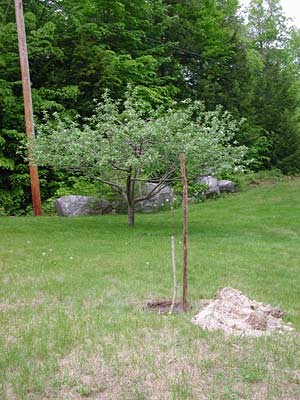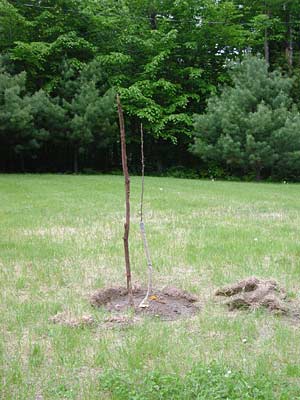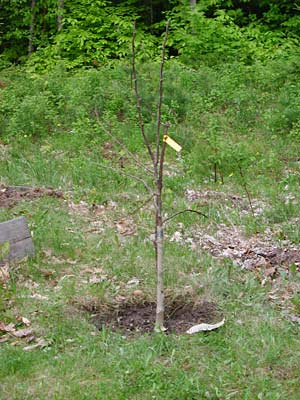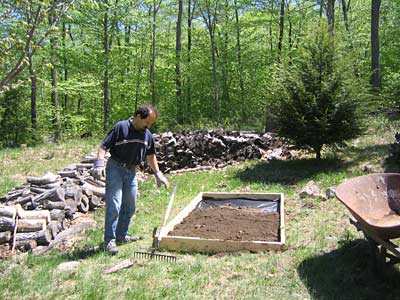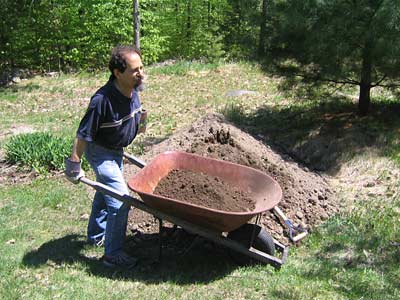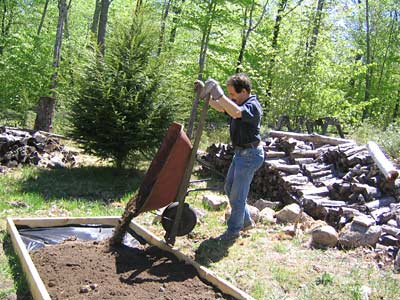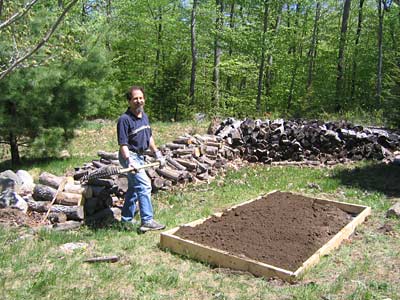It’s spring even in Maine.
There was a big rainstorm about three weeks ago that caused major damage to roads. Gravel under the road, rocks up to the size of baseballs, was washed out from under the pavement of the road that ends at the other side of the gate near our driveway. Our dirt road had lots of erosion, too, but the damage was less spectacular than the broken pavement:
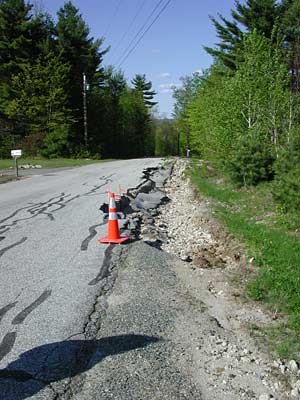
If you drove off the side of that, your right wheel would drop two feet and you’d be looking for a new axle.
Wildflowers are out. Arlene was particularly looking for trilliums. We haven’t found any on our property, but there are lots along both roads up to the top of the ridge.
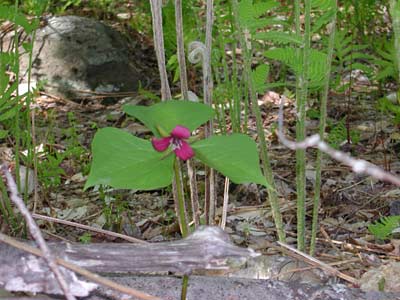

They turn out to be hard to photograph because the blossoms are very close to the ground and bend down. That deep rich red-violet is the right color.
I think I’ll just copy the names of the pictures into the post, and edit them into links later.
Our woods are mostly beech forest, where they’re not bramble and sweetfern thicket. Many of the beech leaves stay on the trees, at least the smaller ones, all winter. Some of the new leaves come out with a copper color like these:
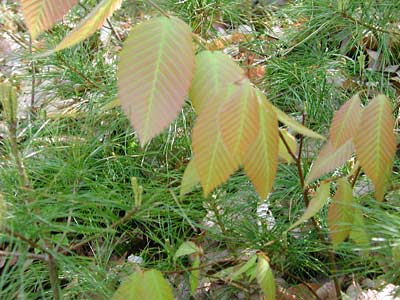
A wildflower that you can overlook is the bluet. It’s tiny, not more than half an inch across, and grows low in the grass. But it’s pretty:
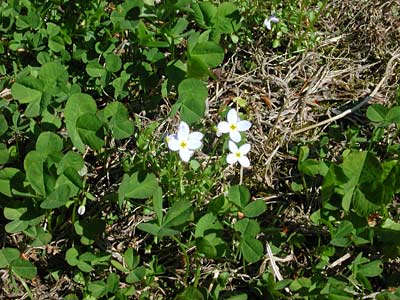
The reason you’re likely to notice bluets is that they grow in patches, so you don’t have to look for just one.
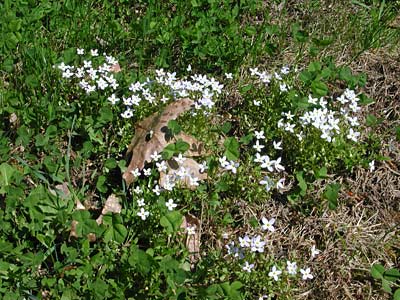
Sometimes they grow in such big patches that you think there’s still snow on the ground.
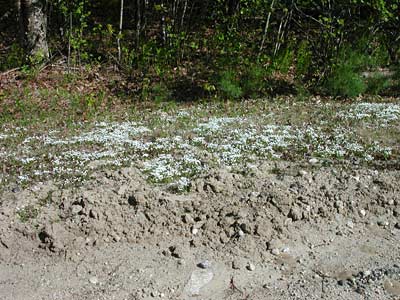
We planted some camas bulbs along the rocks at the beginning of the trail around the place. They haven’t bloomed yet, but there’s lots of foliage.
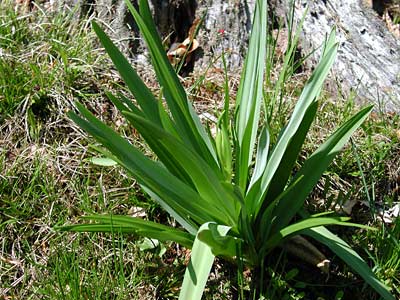
This patch of daffodils and dogtooth violets (trout lilies) is on the side of the house, outside out bedroom window.
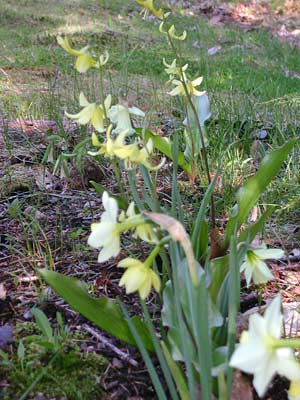
A closeup of the dogtooth violets. These are in our garden, but the flower grows wild as a spring ephemeral — that is, it’s only in bloom for a few days, not more than a week, so you have to be looking at the right time.
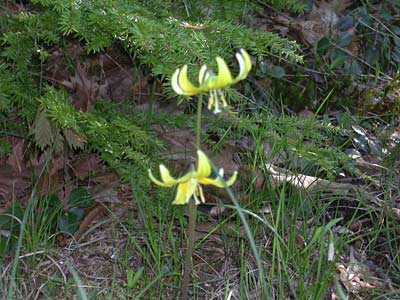
The daffodil bulbs we planted were in an assortment that included many of these peach-colored double daffs. I don’t think I ever took a close look at double daffodils before to see that the petals really do look like two daffodil blooms right on top of each other.
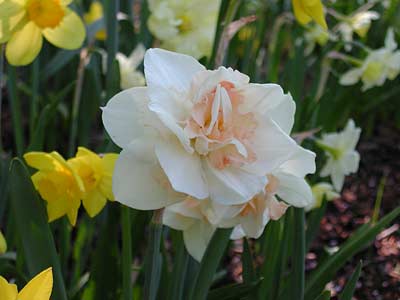
We have lots of white violets growing wild in the lawn. There are lots of species of wild violets, and I have no idea what these are in particular.
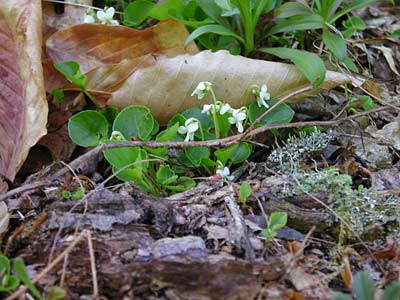
One bird that’s not rare but we don’t see as often as we’d like is the rose-breasted grosbeak. This electric pink is the real color! In this picture t’s sitting in the apple tree right outside the kitchen window, debating whether or not to come back to the window feeder.
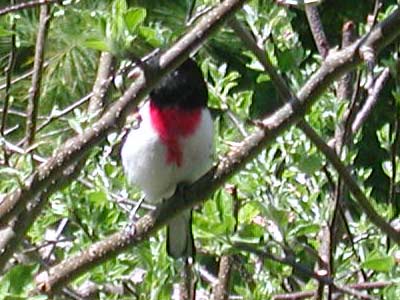
This is a progress report on the new house that’s going up on the other association’s road up the hill. It’s huge!
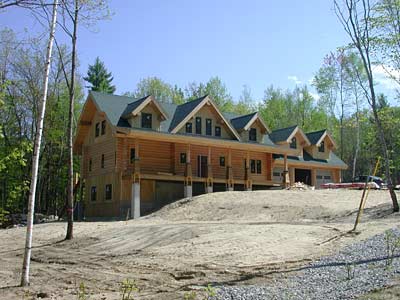
For contrast, here’s an old Maine farm house, the first on the right off North Pine Hill Road. It’s the place where we bought blackberries last summer.
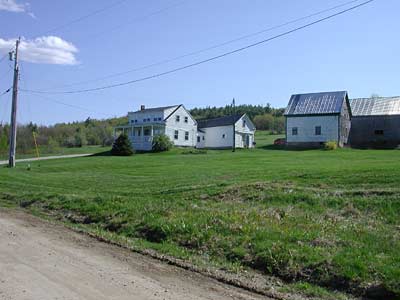
The old farmhouses can have lots of floor area, what shows up in real estate listings as GLAAG, gross living area above grade, but it wasn’t built all at once. One of the groups at the concert in Lewiston last weekend sang a song about “big house, middle house, back house, barn”, the way families would add on to the farm buildings. The old New Englanders built the barn first, because you had to have some place for the animals, and the people could sleep in the barn, too, after all; then the main house for living; then the summer kitchen; then tied it all together.
